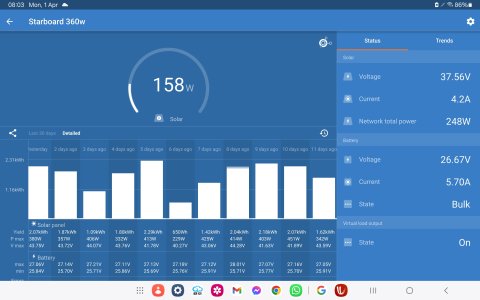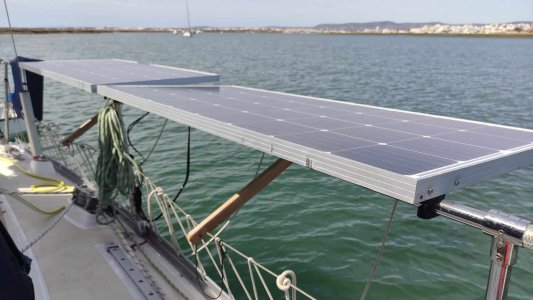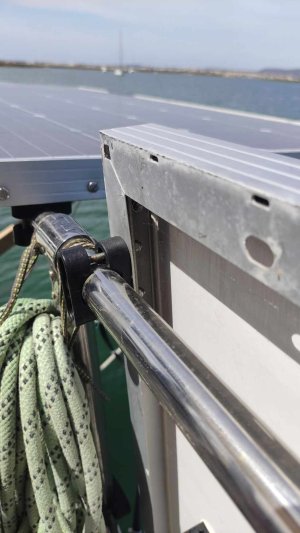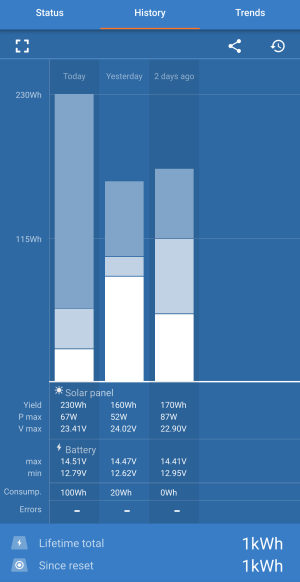andsarkit
Well-known member
That works will it gives me a yield of about 0.3 kWh per day. Can some one give me that in a useful unit?
eg amps/hr.google gives me 25 amp hours/ day.so maybe 1/3 of my requirement?
0.3kWh = 300Wh
Watts = Amps x Volts
So for a 12 V battery: 300Wh/12V = 25Ah
Google is correct






